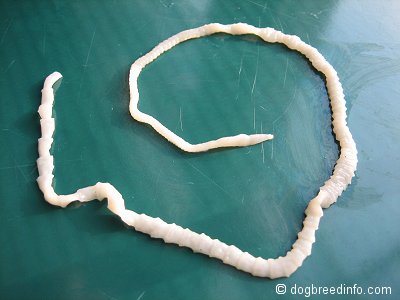I hate to be the bearer of bad news, but flea infestations pose a serious threat to you, your family members, and any pets living inside the home. Not only do these blood-sucking parasites create a world of pain when they bite into you flesh, but they can also transmit tapeworms (Dipylidium caninum). Some people view fleas as a mere nuisance, but these tiny little parasites can transmit some pretty nasty stuff, including the tapeworms.
Symptoms of Tapeworm Infections In Dogs
- Itching and scratching around the anus.
- Sudden weight loss.
- Loss of color and clarity in coat.
- Visible worms in fecal matter.
According to the Centers For Disease Control and Prevention (CDC), tapeworms are transmitted: “By swallowing a flea infected with a tapeworm larvae. A dog or cat may swallow a flea while self-grooming. Once the flea is digested by the dog or cat, the larval tapeworm is able to develop into an adult tapeworm.”
The good news is that tapeworms can not be transmitted through flea bites. Just because a flea bites you or your dog doesn’t mean you are at risk for catching a tapeworm. These worms are transmitted when a flea carrying the tapeworm is consumed, at which point the eggs hatch inside the digestive tract and the worm gradually grows larger.
Unfortunately, many dogs and cats eat fleas, leaving them vulnerable to catching a tapeworm. If you see your pet trying to eat a flea, let them know it’s unacceptable behavior by saying “NO” or “Bad boy!” You don’t want to scold your pet, but at the same time you want them to know that eating fleas isn’t acceptable. A stern “NO” usually does the job for most dogs, cats, on the other hand, are a little more finicky and may not steed your warning.
What If My Pet Is Infected With a Tapeworm?
If you believe your pet has been infected with a tapeworm, don’t hesitate to schedule an appointment with your veterinarian. There are a variety of medications designed to treat tapeworms in dogs in cats, one of which is Anthelmintic. A veterinarian can administer drug by providing your dog with capsule or injection. Anthelmintic works by killing the tapeworm, while the worm’s segments are absorbed by the intestines. It’s a highly effective drug with only a few minor side effects. Talk with your veterinarian to discuss the treatment options available for your pet’s condition.
Did you know tapeworms were transmitted through fleas?

